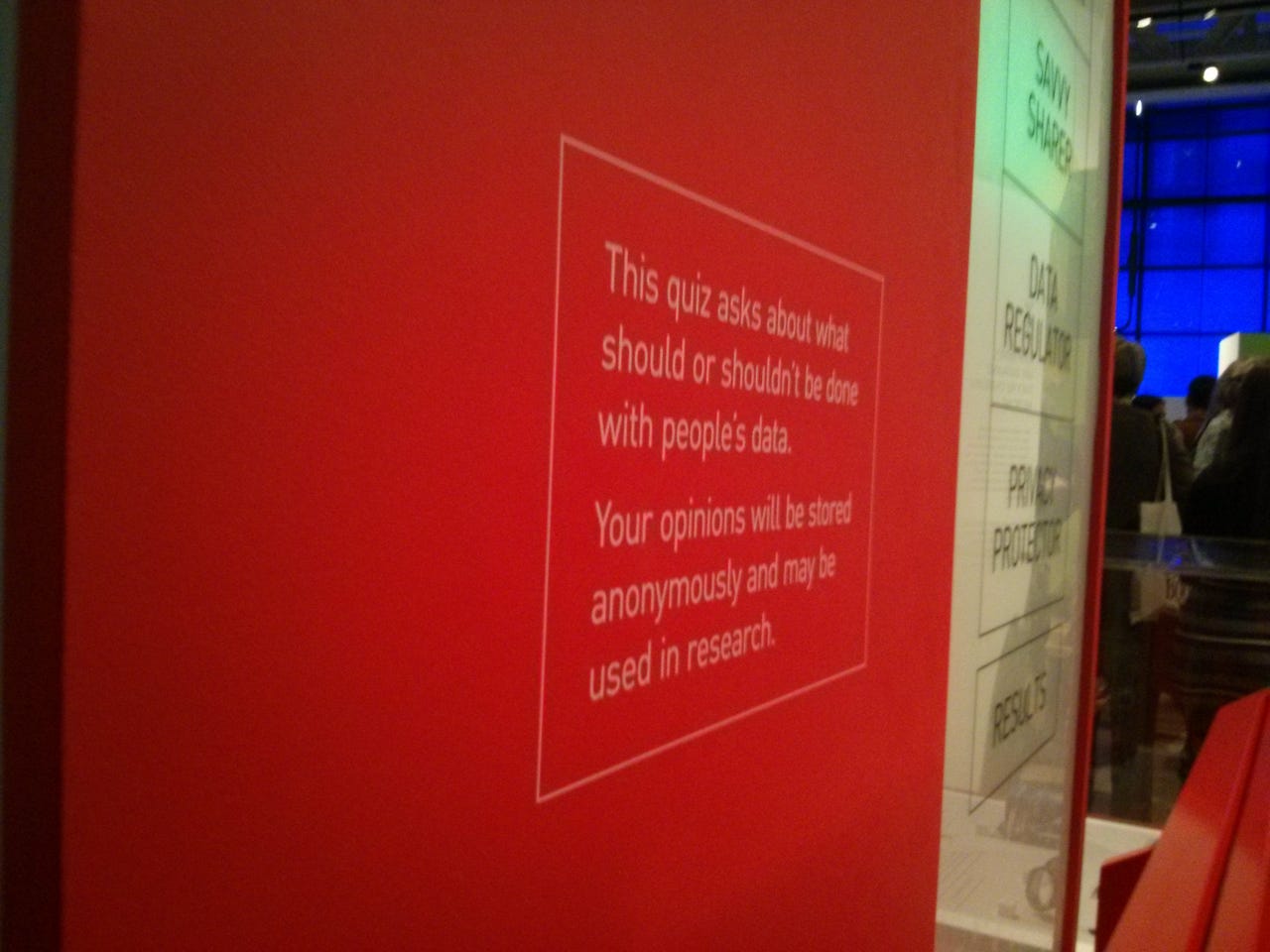Photos: From facial recognition to connected toys, a trip inside the invisible big data revolution

Our Lives in Data
The Science Museum's recently-opened Our Lives in Data exhibition sets out to investigate the rapidly-evolving role of big data in our lives and how it's being deployed to change the world around us -- along with the privacy issues that generates.
3D printed image of Bond Street station
The exhibition examines various different types of data, including that generated by Transport for London and how the organisation uses it to help run the London Underground. Sometimes the data is used to produce physical results like this 3D-printed model of Bond Street station. The model represents a design for a station updated to incorporate Crossrail -- a new railway project designed to create better links between east and west London.
Inside an Oyster Card reader
London Underground users might not think about the technology that allows them to begin and end their journeys across the UK capital by swiping their Oyster card, but Our Lives in Data allows visitors to get a close look at the devices that capture Oyster travel data -- and what it's used for.
Data-producing devices
The exhibition drives home how there's been a massive acceleration in data collection in recent years, driven by both advances in technology and the rise of data science. This exhibit demonstrates some of the everyday items -- including phones and children's toys -- which are connected to the internet and as a result are sending and receiving data.

The data privacy debate
With data being so pervasive in our lives, museum visitors can take a quiz to submit their thoughts on what should and shouldn't be done with the information that's being collected. As you'd expect from such an exhibition, the data is gathered anonymously.
Genes as data
Health makes up a big section of Our Lives in Data, explaining to visitors how their genes constitute data and how analysis of this information is allowing doctors to improve healthcare in a variety of ways. One of those is the 100,000 Genomes Project, which is sequencing the data of patients with rare diseases and cancer to find potential causes.
The Data Mirror
As they approach the Our Lives in Data exhibition's Data Mirror, exhibition visitors will have their photo taken, then facial recognition software will attempt to determine their age, gender, and happiness. The Data Mirror's results have been mixed in the early stages of the exhibition, but as more visitors test it, it should improve with time.
The Science Museum's Our Lives in Data exhibition is free to visit and open from July 2016 to September 2017.